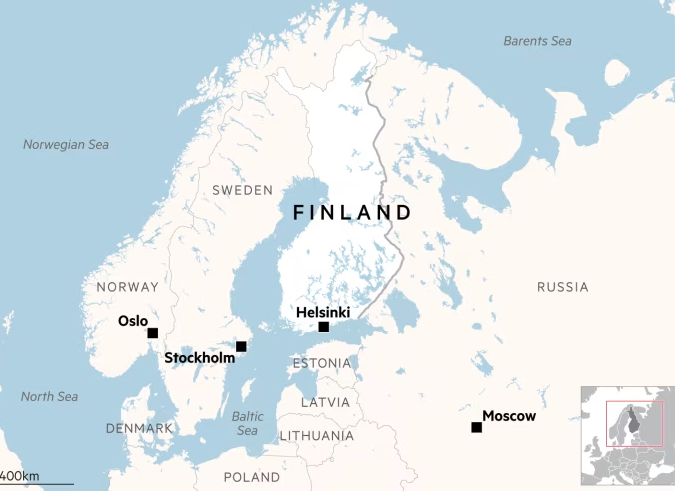NATO Border Nations Plan ‘Drone Wall’ Against Russia (GS Paper 2, IR)

Context and Background
- Amid escalating security concerns and tensions along their borders with Russia, six NATO countries—Finland, Norway, Poland, Estonia, Latvia, and Lithuania—are devising plans for a coordinated drone defense system.
- The concept of this project, dubbed the “drone wall,” emerged in response to ongoing conflicts such as the war in Ukraine and allegations of Russia employing "hybrid warfare" tactics.
- Hybrid warfare, blending conventional military tactics with non-military strategies like cyberattacks and disinformation campaigns, complicates attribution and response efforts.
Implementation of the Drone Wall
- The proposed drone wall is envisioned to span from Norway to Poland, encompassing all NATO countries bordering Russia.
- Lithuanian Interior Minister Agne Bilotaite initiated discussions surrounding the project, aiming to integrate security drones and anti-drone technologies to enhance border safety.
- The system aims for real-time threat detection and swift response capabilities.
Technological and Strategic Significance
- Recognizing the evolving landscape of warfare, particularly evidenced by conflicts like Ukraine, officials emphasize the strategic importance of drone technology.
- Estonia’s Interior Minister Lauri Laanemets highlights the transformative impact of drones on modern warfare, underscoring their role in bolstering defenses and safeguarding sovereignty against unconventional threats.
Broader NATO Support and Initiatives
- The regional initiative aligns with NATO’s broader strategy of fortifying member states' air and missile defenses.
- Poland’s participation in the European Sky Shield Initiative, aimed at establishing an integrated air defense system akin to Israel’s Iron Dome, underscores NATO’s commitment to protecting territories from aerial threats.
More About NATO-Russia Border Defense
Military Investments and Enhancements:
- Several NATO members have significantly increased military spending to bolster border defenses against Russia.
- Poland notably ramped up defense expenditure following Russia’s annexation of Crimea in 2014.
- Additionally, Estonia, Latvia, and Lithuania’s accession to NATO in 2004 strengthened the alliance's eastern flank.
Strategic Initiatives and Deployments:
- NATO’s Enhanced Forward Presence, initiated in 2017, is pivotal to the defense strategies of Poland and the Baltic states.
- Military drills along the Norway-Russia border in the Arctic region underscore NATO’s focus on regional security.
- The Suwalki Gap, a crucial corridor between Poland and Lithuania, is a focal point for NATO’s defense efforts.
Regional Security Dynamics:
- Membership in NATO has substantially enhanced security in the Baltic states, while Poland’s increased defense spending underscores its strategic importance to NATO’s eastern defense posture.
- The Arctic region, where Norway shares a border with Russia, remains central to NATO’s security agenda, with ongoing military exercises reinforcing alliance cohesion and deterrence capabilities.


